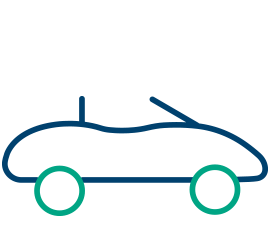Employing heat recovery ventilation solutions in airtight, insulated buildings enables marked reductions in the energy used for heating and cooling. Alongside these energy reductions and correlated financial benefits, there are significant carbon emissions that are avoided when compared with alternative, base-line ventilation.
Building on the model that we designed in collaboration with the engineering consultants Arup, and updating for carbon conversion factors, this year we have again calculated the avoided emissions from our heat recovery products sold in the current year, over the lifetime of those products sold.
Our heat recovery products consistently reduce energy consumption throughout their useful life, thereby avoiding emissions for more than just a single year. Further, with every successive year, the sales contribute to the growing installed base, leading to cumulative emission reductions. We have, however, assessed only the lifetime emissions of heat recovery products sold in FY25.
The estimates of the equivalent number of homes and cars shown are subject to the same assumptions, limitations and sensitivities of the calculation of the reported avoided emissions, and further by the assumptions and limitations of the average emissions for homes and cars published by the Office for National Statistics (ONS) and the Department for Transport (DfT) and used for the calculations.
Definition – avoided emissions
Avoided emissions are those emissions avoided from the use of Volution Group heat recovery products when compared with alternative measures of ventilation. Avoided emissions are not included within Scope 1, 2 or 3 emissions, and do not form part of reporting of total emissions or net zero targets for the Group.
Details about the methodology used and assumptions and uncertainties inherent in the calculation can be found on page 187 in the Annual Report.
1,979,945 tCO2e
Avoided emissions from the use of our heat recovery products sold in FY25 over their lifetime of use
638,266
homes’ carbon dioxide emissions for 1 year1
The same as:
or

1,026,738
cars off road for 1 year2
1. Calculated by taking the Volution reported avoided emissions of 1,979,945 tCO2e and dividing by the median emissions for an existing dwelling
in England for one year (Office for National Statistics (ONS), 2023).
2. Calculated by taking the Volution reported avoided emissions of 1,979,945 tCO2e and dividing by the overall average emissions per mile for UK diesel
automobiles, (DfT, 2024) assuming 7,000 miles driven per annum per vehicle (DfT, 2024).


